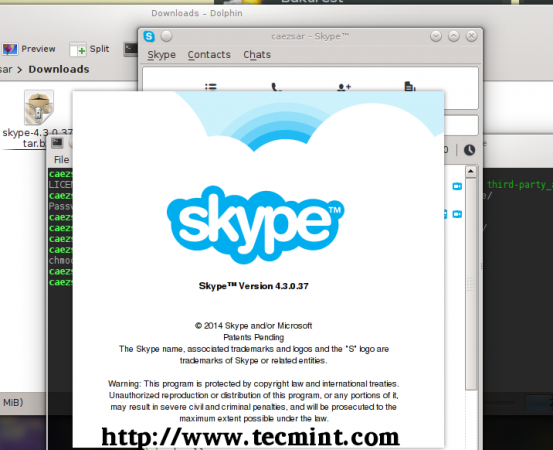

Some network administrators have banned Skype on corporate, government, home and education networks, citing reasons such as inappropriate usage of resources, excessive bandwidth usage, and security concerns. It makes use of background processing on computers running Skype software, and this is reflected in Skype’s original proposed name of Sky Peer-to-Peer. Unlike most other VoIP services, Skype is a hybrid peer-to-peer and client–server system. Competitors include SIP and H.323-based services, such as Linphone and Google Hangouts. Skype has also become popular for its additional features, including file transfer, and videoconferencing.
#HOW TO INSTALL SKYPE ON LINUX FREE#
Calls to other users within the Skype service are free of charge, while calls to landline telephones and mobile phones are charged via a debit-based user account system.

Phone calls may be placed to recipients on the traditional telephone networks. The service allows users to communicate with peers by voice using a microphone, video by using a webcam, and instant messaging over the Internet. Microsoft’s Skype division headquarters is in Luxembourg, but most of the development team and 44% of the overall employees of the division are still situated in Tallinn and Tartu, Estonia. It was bought by Microsoft in 2011 for $8.5 billion. Skype had 663 million registered users as of the end of 2010. It was created by by Janus Friis (Denmark) and Niklas Zennström (Sweden) in cooperation with Ahti Heinla, Priit Kasesalu, and Jaan Tallinn (Estonia), who supplied the backend which was also used in Kazaa. The name was derived from “sky” and “peer”. Skype is a freemium voice-over-IP service and instant messaging client, currently developed by the Microsoft Skype Division.


 0 kommentar(er)
0 kommentar(er)
